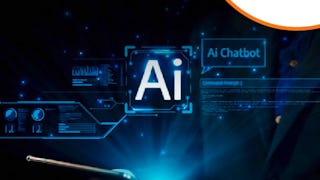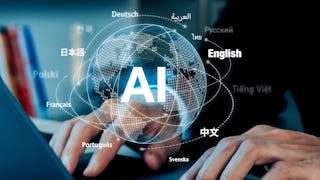Ready to explore the exciting world of generative AI and large language models (LLMs)? This IBM course, part of the Generative AI Engineering Essentials with LLMs Professional Certificate, gives you practical skills to harness AI to transform industries.



Generative AI and LLMs: Architecture and Data Preparation
This course is part of multiple programs.


Instructors: Joseph Santarcangelo
Access provided by New York State Department of Labor
36,342 already enrolled
(334 reviews)
Recommended experience
What you'll learn
Differentiate between generative AI architectures and models, such as RNNs, transformers, VAEs, GANs, and diffusion models
Describe how LLMs, such as GPT, BERT, BART, and T5, are applied in natural language processing tasks
Implement tokenization to preprocess raw text using NLP libraries like NLTK, spaCy, BertTokenizer, and XLNetTokenizer
Create an NLP data loader in PyTorch that handles tokenization, numericalization, and padding for text datasets
Skills you'll gain
Details to know

Add to your LinkedIn profile
4 assignments
See how employees at top companies are mastering in-demand skills

Build your subject-matter expertise
- Learn new concepts from industry experts
- Gain a foundational understanding of a subject or tool
- Develop job-relevant skills with hands-on projects
- Earn a shareable career certificate

There are 2 modules in this course
In this module, you will learn about the significance of generative AI and how it is transforming various fields through content generation, code creation, and image synthesis. You will explore key generative AI architectures, such as generative adversarial networks (GANs), variational autoencoders (VAEs), diffusion models, and transformers, and understand the differences in their training approaches. You’ll also examine how large language models (LLMs) like generative pretrained transformers (GPT) and bidirectional encoder representations from transformers (BERT) are applied in building NLP-based applications. Finally, through a hands-on lab, you will create a simple chatbot using the Hugging Face transformers library and get introduced to essential tools and libraries used in generative AI development.
What's included
5 videos2 readings2 assignments1 app item3 plugins
In this module, you will learn how to prepare data for training large language models (LLMs) by implementing tokenization and building data loaders. You will explore different tokenization methods and understand how tokenizers convert raw text into model-ready input. You will implement tokenization using libraries such as NLTK, spaCy, BertTokenizer, and XLNetTokenizer. Additionally, you will learn the role of data loaders in the training pipeline and use the DataLoader class in PyTorch to create a data loader with a custom collate function that processes batches of text. These practical skills are essential for building efficient NLP pipelines for LLM training. In addition, supporting materials, such as a cheat sheet and glossary, will reinforce your learning.
What's included
2 videos5 readings2 assignments2 app items2 plugins
Earn a career certificate
Add this credential to your LinkedIn profile, resume, or CV. Share it on social media and in your performance review.
Offered by
Why people choose ����vlog�����ۿ� for their career




Learner reviews
334 reviews
- 5 stars
76.99%
- 4 stars
15.63%
- 3 stars
5.01%
- 2 stars
1.47%
- 1 star
0.88%
Showing 3 of 334
Reviewed on Jul 30, 2025
I would expect more hands on and code submissions
Reviewed on Mar 1, 2025
Was waiting for a course like this for a long time. Very happy with it. Library installation on labs seems a bit slow
Reviewed on Mar 25, 2025
Too fast reading of the slides without much of explanations.





